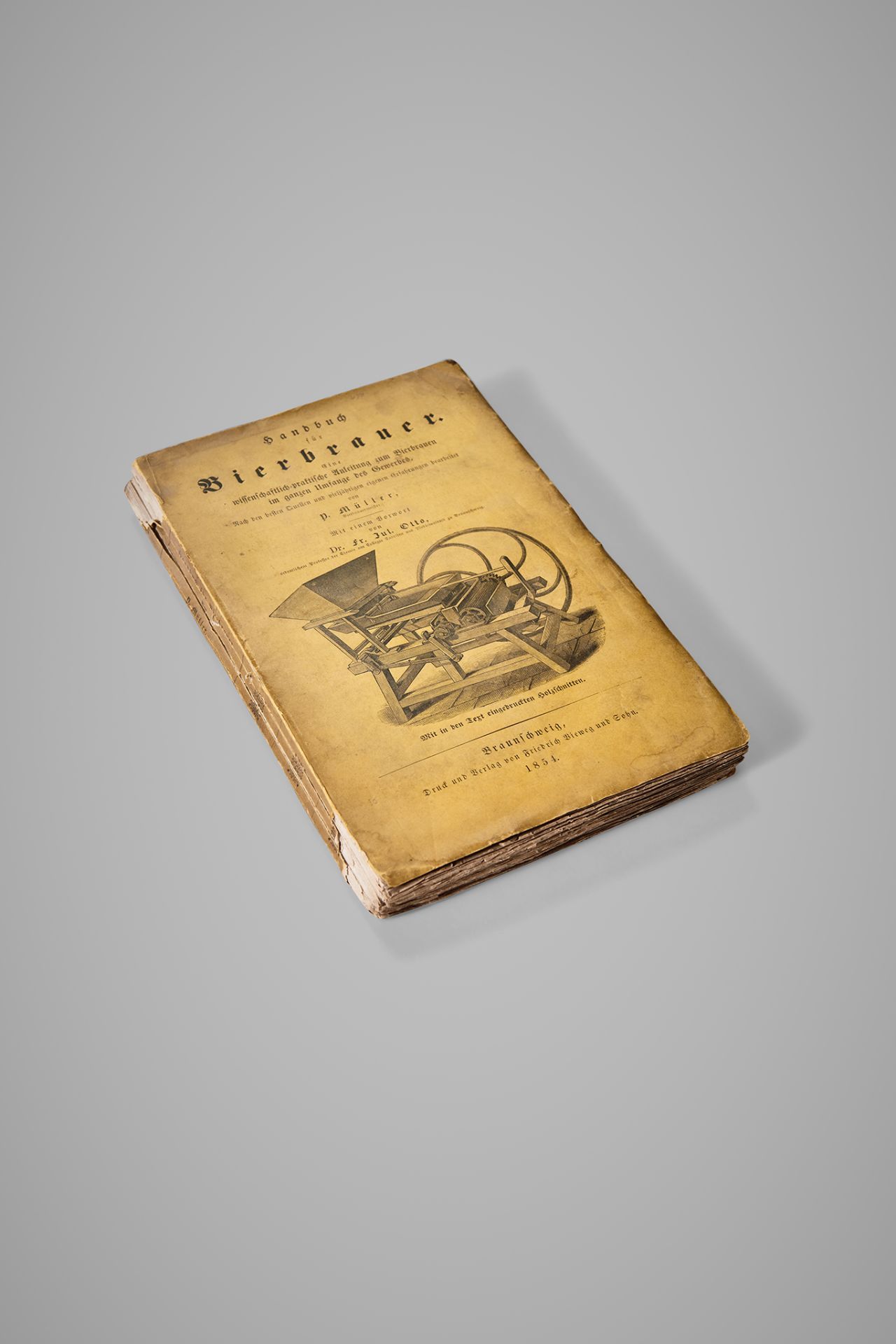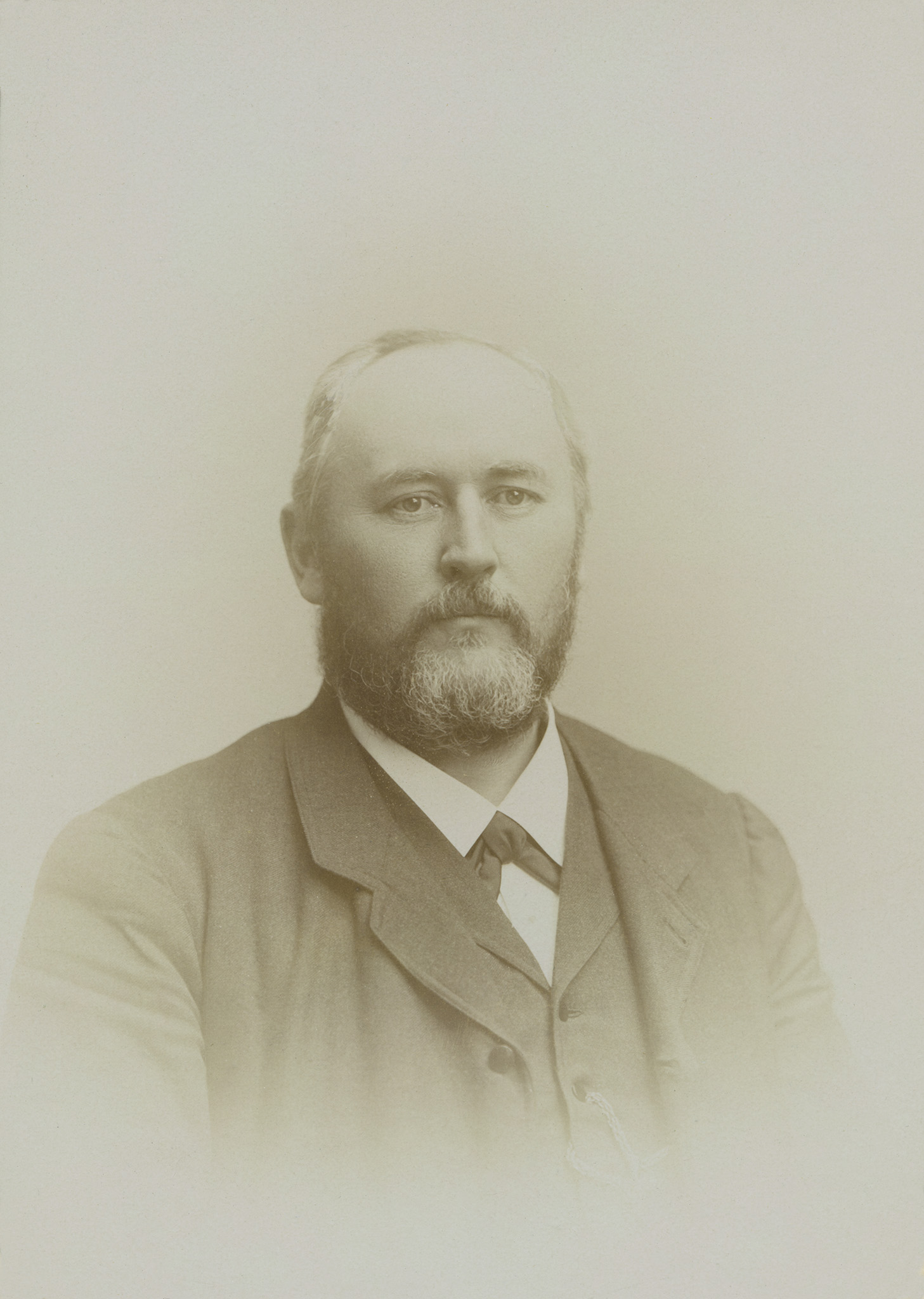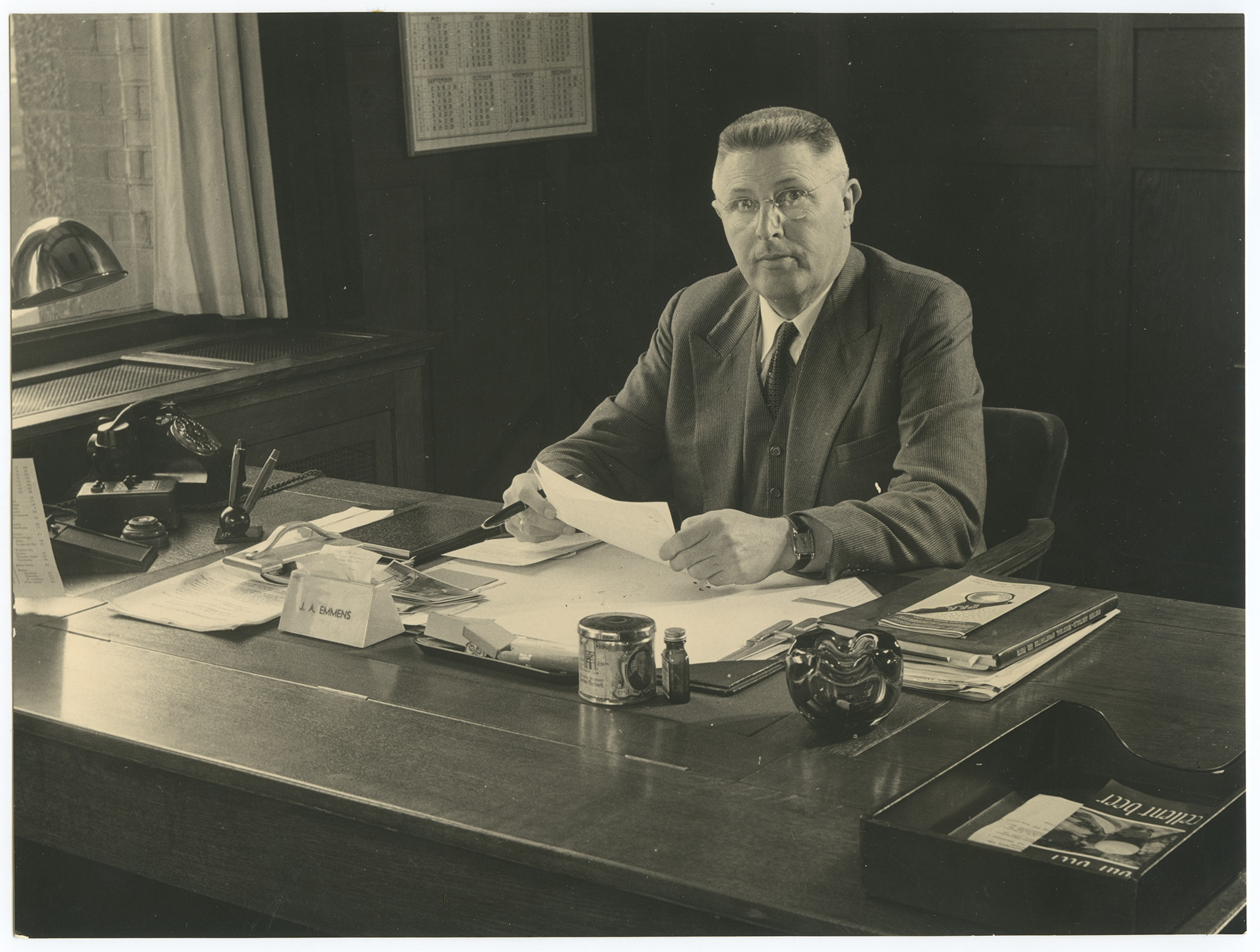INFO
Handbuch für Bierbrauer (Handbook for Beerbrewers)
1854
paper, cardboard
h 22.5 x w 2.3 x d 14.5 cm

Expertise from our Eastern neighbours
Founder Gerard Adriaan Heineken acquired the Amsterdam De Hooiberg (The Haystack) brewery in 1864, a decade after the publication of this German handbook for brewers.
Traditionally, top-fermenting beers, such as the cloudy 'Hollandsche' Princessebier, were brewed in De Hooiberg. Since Gerard had no knowledge of brewing, he undoubtedly read this publication –especially when he later ventured into Czech pilsner, which reached the Netherlands as 'Bavarian beer' through Germany.
Limited success
Unfortunately, Heineken's initial experiments were met with limited success. This clear, bottom-fermenting beer requires a low brewing temperature, achievable only in winter. Additionally, the government imposed double excise taxes on the new foreign beer. And so Heineken continued brewing top-fermenting beers for the time being.
Knowledge and assistance
However, Bavarian beer became increasingly popular in the Netherlands, especially among the affluent, prompting Heineken to make a new attempt. He reached out to foreign colleagues to conduct research and share their findings. Furthermore, he enlisted German expertise by hiring brewmaster Wilhelm Feltmann in 1869. Now, Heineken could technically prepare his new steam brewery on Stadhouderskade for the future. To achieve this, the new brewmaster brought many compatriots to Amsterdam. The German guest labourers worked long hours but lived rent-free on the brewery grounds, enjoying clean linen and beer on a daily basis.

German bosses
Not long after introducing his new pilsner in 1873 – alongside the Rotterdam d'Oranjeboom brewery – Heineken established N.V. Heineken’s Bierbrouwerij Maatschappij (HBM). A second brewery complex, with a complete laboratory focusing on Bavarian beer production and export, arose along the Rotte River. Brewmaster Wilhelm Feltmann took charge of the technical aspects and German employees were also hired, most of them serving as supervisors in crucial positions within the brewing process.
The Boss Course
In 1920, Jan Emmens succeeded the chemist Hartog Elion as head of the Rotterdam laboratory, where he focused on yeast culture. Emmens rose rapidly within the organisation until he became the brewery's manager in 1936. Later, he noted in his memoirs: 'The more I dealt with the German bosses who worked in our breweries up to that time, the better I understood that we had to replace them as soon as possible.'
His annoyance was mainly directed at their work ethic and the language barrier. Consequently, Emmens proposed training personnel internally and initiated the 'boss course' in Rotterdam. This allowed the Heineken breweries to have well-trained and dedicated technical leaders with Dutch nationality.
First batch
Participants in the inaugural batch (1930) became known as Emmens' 'twelve apostles' because he took them everywhere. Over time, they replaced the German staff, whose position became untenable during the Nazi occupation in World War II. After the war, the course increasingly focused on training leaders for the new foreign breweries, under the name Technical Departments. But that's another story.
